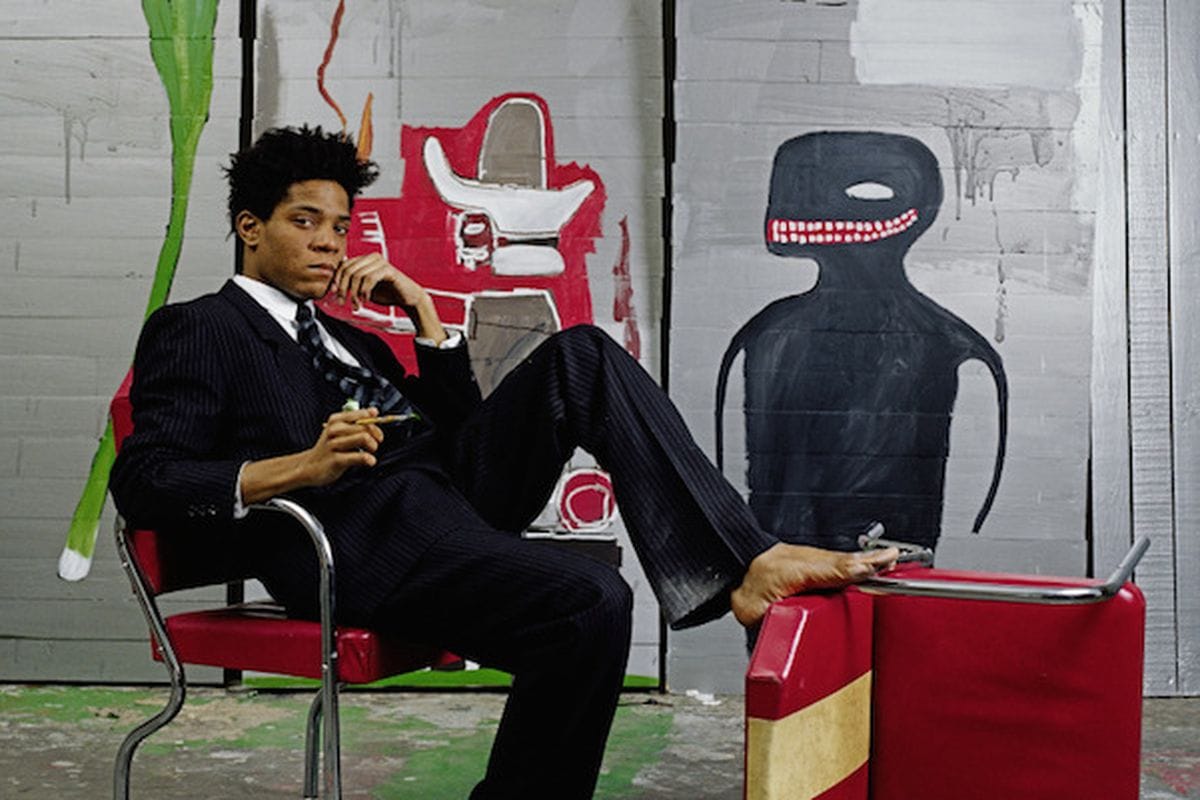
In the pulsing nights of 1980s downtown Manhattan, art crawled out of subway cars and onto gallery walls like a infection— and Jean-Michel Basquiat painted like a man channeling healing spirits speaking in spray paint and oil stick. His neo-expressionist screams—crowned heads and cryptic text bleeding across canvases—became the rosetta stone of street art's ascension the marble-floored realm of high culture.
The boy wonder who signed his early work SAMO© (Same Old Shit) transformed himself from a couch-surfing teen into art royalty with the velocity of a comet. His paintings spoke in a revelatory tongue: part anatomical diagram, part African griot narrative, part bebop improv rendered in violent color. The crown motif that floated above his figures wasn't decoration—it was prophecy.
Here was an artist who could channel both the raw energy of the streets fused with refined aesthetics, making the Xerox machine and the paintbrush speak the same desperate lingo. His friendship with Andy Warhol—pale pope of pop art—created a partnership that read like a downtown fairy tale, until it didn't.
Success came like a tidal wave: by twenty-five, Basquiat had achieved what most artists spend lifetimes pursuing. His canvases commanded $$$ that made collectors' hands tremble. But paradise was tinged with poison. The art world's embrace was a gilded cage, and fame arrived wearing brass knuckles.
The tragic poetry of Basquiat's brief life—dead at twenty-seven from a heroin overdose in 1988—feels scripted, like some cosmic playwright couldn't resist the symmetry of another supernova; hot, bright, exploded into infinity before the light registered. But focus solely on his death and miss the truth of his work: Basquiat painted a life of magnificent chaos. His canvases still pulse with it, three decades later.
Today, his paintings hang in the world's most prestigious museums, commanding vertigo-inducing prices. More importantly, his visual language—that frenetic fusion of high and low, ancient and modern, street and salon—has become part of art's basic vocabulary. Every spray-painted crown in every city alley carries an echo of Basquiat's coronation.
Perhaps Basquiat's greatest achievement wasn't in the millions his paintings now command, or even in the walls they grace, but in the doors he kicked open. He proved that art could speak in any accent, wear any clothes, come from any street corner—as long as it spoke a truth. In a world still wrestling with questions of who gets to make "serious" art, Basquiat's legacy isn't just remembered; it's required reading.
"Jean-Michel Basquiat. Engadin," on view at Hauser & Wirth St. Moritz until March 29th, 2025, presents a captivating exploration of the iconic artist's profound connection to Switzerland.
 Hauser & Wirth
Hauser & Wirth
This exhibition delves into the works Basquiat created during and inspired by his visits to the country, particularly the Engadin region, where the natural and cultural landscapes left a distinctive mark on his art.
Featuring pieces that intertwine Swiss Alpine motifs with elements of his New York influences, the show highlights the artist's unique visual language and the interplay of contrasting worlds. Anchored by monumental works such as the nine-panel painting "The Dutch Settlers" (1982), the exhibition celebrates Basquiat's ability to navigate themes of identity, race, and history through a lens shaped by the serene yet complex backdrop of the Swiss Alps.

